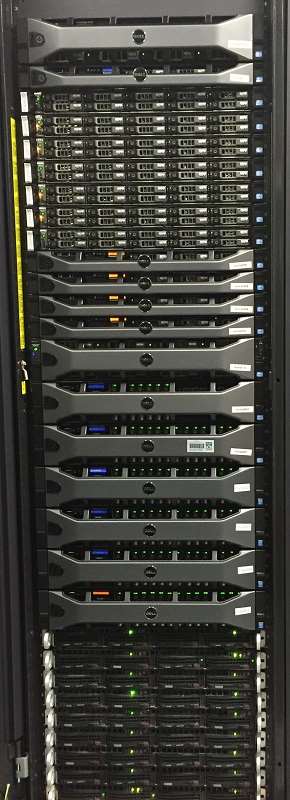Universities in Adelaide and Perth have brought online new high-performance compute (HPC) clusters that will be put to work on scientific research projects.
The University of Western Australia has deployed a 2316-core cluster codenamed ‘Pople’ in its Faculty of Science.
Pople uses Intel Xeon CPUs and boasts “7.8 TB of main memory and 153 TB of local scratch disk”, according to the faculty’s systems administrator Dean Taylor.
Of the cluster’s 2316 cores, 1896 were donated by DownUnder GeoSolutions, a Perth-based geoscience company.
Pople has been engineered to carry out “large memory and data-intensive applications … in computational chemistry, biology, physics, and ‘big data’ research,” UWA said in a statement.
The university will also use the new compute capacity in the ongoing study of gravitational waves.
Such waves were recently detected by researchers, proving a concept predicted by Einstein's theory of general relativity. UWA physicists are among those who have devoted decades to gravitational wave research.
“Pople places the Faculty of Science in a unique position for supporting advanced research across all areas of research in the Faculty” the head of the computational chemistry lab at UWA’s School of Chemistry and Biochemistry Dr Amir Karton said.
“It will be used for conducting multi-scale simulations of biochemical processes, studying gravitational waves, and simulating combustion processes which generate compounds important for seed germination.
“Such research could have been previously carried out only on national supercomputers, now these capabilities are accessible to any researcher in the faculty.”
The University of Adelaide, meanwhile, has switched on a larger Lenovo-based HPC cluster containing 3840 cores and that “benchmarks at 300TFlops”.
The cluster, dubbed Phoenix, is also based on Intel Xeon processors (those codenamed Haswell), “with options to support GPU Adapters via flexible expansion modules”, Lenovo said.
According to the University of Adelaide, the new cluster will be put to work in areas such as “particle physics, machine learning, fluid dynamics and bioinformatics to conduct timely computational analysis and modelling.”
“The system will offer a rich tool set for researchers so they can maximise the accuracy of findings, improve publication impact and increase citations,” the University of Adelaide also said.
Australia currently has five facilities in the most recent Top500 list of supercomputers, including the Pawsey Supercomputing Centre, National Computational Infrastructure and CSIRO.









